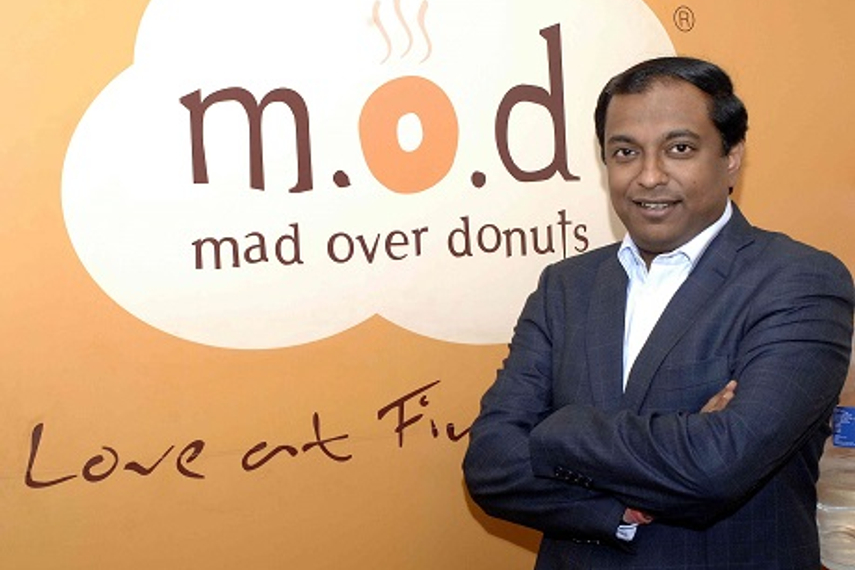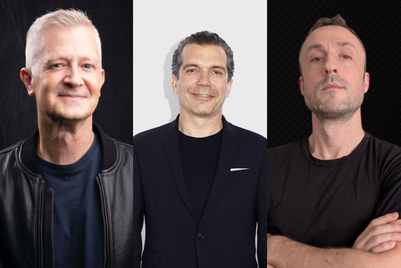How effective has it been to rely mainly on social media for marketing?
What started off in 2008 was that we wanted to experiment with our donuts in terms of sampling. So our store turned into a media centre. A lot of sampling information was gleaned through the stores themselves. Donut is still a niche category; so you can imagine how it was back when we started (and in a sense it remains that way today too). We wanted to understand whether people understand the product or not before experimenting. We never intended to serve warm donuts. When we started off, donuts were served cold, just like they are in the rest of the world. It was our customers who said that the Indian palate prefers the donuts warm. Our stores playing the role of our media centres coincided with social media being the ‘big thing’ in the past few years – that helped. Having said that, it was a conscious decision on our part to stick to social media to get the word out.
What is the engagement strategy for Twitter, Facebook, Instagram and Pinterest? How does it differ for each platform?
Facebook, specifically, has helped us big time in terms of the volume of suggestions that it allows our customers to send across. Our customers tell us if we are going right or wrong immediately. Our engagement strategy, across all social media platforms that we are present in, is customer-centric. We strictly maintain the six to eight-hour response time to any query, suggestion, grievance etc. Our recent product offerings such as the Jelly Festival, Savoury Delight etc. are a result of engaging with our customers and listening to what they have to say.
Social media being instantaneous in nature has become a pressurising medium for us. It has helped us since it keeps us on our toes. We can keep saying that ‘the consumer is right’ but it will only mean something when we actually listen to the consumer. So our strategy, per se, does not differ across the social media sites we are on.
Is crowdsourcing product suggestions, with the frequency with which M.O.D does it, bordering on letting go of your brand or keeping in within yourself?
The consumer to an extent will define a brand. But as a brand, the image that we would like to maintain will always remain in our hands. The consumer can decide what they want on the menu but what the brand image will be - has to be - our decision.
As the brand grows further, do you see M.O.D adopting ATL/BTL marketing activities in the future (in addition to social media marketing)?
Going ahead we will have to get into those aspects. The advertising or marketing activities that we take up in the future will try to balance out a system to reach both our existing customers and the new audience that we are trying to reach. We’ll start with the product, not the brand. People need to know the product first, the brand can follow later. After we’re past that stage we might want to move into a lifestyle product positioning but we still have some way to go before that happens.
Does M.O.D see a direct correlation between active engagement on social media and an increase in sales?
Absolutely. We recently had an activity titled ‘World Donut Day’ where our customers were asked to tweet to bring the donut prices down for a day. We finally settled on Rs 30 as a result of the tweeting and World Donut Day was celebrated at our stores on 18 July with great response from the public. We saw a hike of five and a half times for the number of walk-ins. This shows that there is an awareness of our brand which is continuously growing.
With competitors having come in - Krispy Kreme and Dunkin' Donuts - will it prompt M.O.D into actively advertising the brand?
So far nothing has changed for us. We want our consumption to go up. Getting a category from a niche segment to a staple segment requires more and more number of players in the market. As soon as the category enters the staple segment, the category grows, which is the focal point for all players in the market. Business will follow eventually. We are still trying to capitalise on the consumption part. Right now we’re still focusing on implementing our learnings gained since we started. We will have to go into advertising soon, may be a TVC by the next six months may also be on the cards.
Having competitors in a category such as this, where people always have the alternative to choose more well-known options from a burger to a vada pav or say a pizza, has its advantages and disadvantages. It’s a great leveller; it helps given that market currently has a lot of space for all the players.
What are M.O.D's plans to expand outside India? Will the same pattern of adapting the products to the local tastes be applied in those markets?
We are ready to foray into the international market soon - as early as the end of this financial year. Starting with South East Asian countries such as Malaysia, Cambodia, Vietnam. In terms of the marketing initiatives that will support us in this, it will be too early to share those. Towards the end of this year we will be in a better position to answer this.
Since the markets we are targeting are of the kind that need more education about this product category, the strategy will be more or less the same as in India.
Of the 54 stores in India, what's the kiosk - cafe split? Is M.O.D planning to open standalone cafes in addition to the kiosks in malls?
For our kind of business, if we will open a big store, we’ll die! Majority of our stores will continue to remain takeaway stores as it is a grab-and-go product. Cafes will always be an addition. Our focus will still be to open smaller stores with sparse seating (if at all). Smaller stores or takeaway stores are the things that are helping our business. May be 10 per cent of our stores will be in the café format but the big chunk will compromise of takeaway stores.
More importantly, we want to open a store at the right place and at the right price. If we get the right place, we are open to considering a café there. Not only that, the place in itself must demand a café. But even then only one out of five times will we be inclined to move from kiosks to cafes.
What is the number of stores planned in India and in what time frame?
We’re looking at 20 to 24 more stores by the end of March 2015, in addition to the 54 that we now have across India.
What does the revenue graph look like for M.O.D, from 2008 to 2014?
We can’t share figures. But I can say that we have grown and are well placed.




.jpg&h=268&w=401&q=100&v=20250320&c=1)

.png&h=268&w=401&q=100&v=20250320&c=1)

.jpeg&h=268&w=401&q=100&v=20250320&c=1)
.png&h=268&w=401&q=100&v=20250320&c=1)
.png&h=268&w=401&q=100&v=20250320&c=1)

